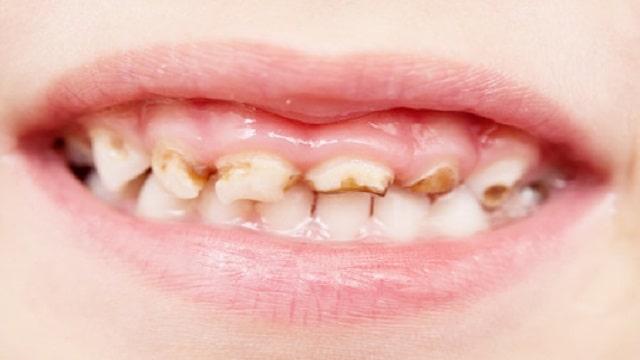
Asbestosis Symptoms, Risk Factors & Treatment | Diseases List A-Z
Asbestosis is a type of pulmonary fibrosis and is also classified as an interstitial lung disease.
This chronic lung disease is associated with long-term exposure to asbestos.
Asbestos itself is a heat-resistant silicate fiber that is widely used in various industries, flooring, and roofing, especially before 1970.
In fact, if the material containing asbestos is in good condition, then the asbestos fibers contained in it are not dangerous.
However, if the coating is damaged, people nearby are at risk of being exposed to asbestos.
Inhaled asbestos fibers will settle in the lungs and will continue to settle, causing inflammation, scars, and damage to lung tissue called asbestosis.
Asbestosis is a risk factor for malignancies, such as bronchial carcinoma and mesothelioma.
Asbestosis Symptoms Asbestosis symptoms usually only appear after long-term exposure, such as working near objects containing asbestos for at least 20 years or more.
However, too much exposure to asbestos-containing materials can speed up the time to develop asbestos symptoms.
Some of the symptoms of asbestosis that are commonly experienced include: Shortness of breath during activity.
Persistent dry cough.
Discomfort in the chest can be pain or a feeling of heaviness in the chest.
No appetite.
Weight loss.
Larger fingertip size ( clubbing ).
Causes of Asbestosis The main cause of asbestosis is the entry of very small asbestos fibers, resulting in damage to lung tissue.
When asbestos fibers enter the lungs, these fibers cannot be removed again and will increase if exposed continuously.
The entry of foreign objects, other than air into the lungs, will cause an inflammatory reaction and eventually leave scar tissue or scars.
Repeated inflammation will cause extensive scarring and interfere with normal lung function.
Extensive scarring will then make the lungs unable to expand properly, so that the amount of air entering is not enough to meet the body’s needs.
At this time, sufferers will feel tightness and discomfort in the chest.
This condition can be worse when sufferers have a smoking habit.
At this time, sufferers will feel tightness and discomfort in the chest.
Asbestosis Risk Factors Risk factors for asbestosis are long-term exposure to asbestos or exposure to large amounts of asbestos.
Usually, this condition occurs because of being in an environment or working in an environment that contains asbestos.
Some products that potentially contain asbestos, such as: Products containing asbestos cement, namely pipes and sheet boards.
Vinyl-asbestos flooring.
Asbestos paper for filtering and insulating products.
Brake lining material and clutch surface.
Textile products, such as yarn, ribbon, and rope.
Spray products for acoustic, heating, and fire retardant purposes.
Insulation systems for roofs, walls, and stoves.
Hot water pipe wrapping.
Heat-resistant fabric.
Types of work that are at risk of exposure to asbestos include: Pipe worker.
Factory worker.
The risk of asbestosis can also occur if there are family members who are also affected by asbestosis.
Asbestos fibers can stick to clothing, shoes or on the body.
Asbestosis Diagnosis The diagnosis of asbestosis is made based on a history of working or living in long-term asbestos exposure, and physical examination shows signs that indicate asbestosis.
Furthermore, the doctor will recommend conducting supporting examinations, such as: Chest X-ray In this examination, pleural thickening and lung tissue calcification can be found.
CT scan can differentiate pleural and pleural-related disorders and bronchial-related symptoms.
High-resolution CT scans can detect the diagnosis of early-stage asbestosis.
Pulmonary Function Test This test is used to determine the volume and capacity of the lungs which will be reduced in lung sufferers.
This examination is carried out to determine the condition of tissue oxygenation.
Histological Examination Histological examination aims to see fibrosis and asbestos bodies under a microscope.
Asbestos bodies are asbestos fibers coated with ferritin protein and shaped like long beads.
Histological examination is useful for determining the severity of the disease.
Complications of Asbestosis People with asbestosis are at higher risk of developing lung cancer, especially if they smoke or have smoked.
In rare cases, malignant mesothelioma, a cancer of the tissue around the lungs, can occur years after exposure to asbestos.
Asbestosis Treatment and Side Effects Asbestosis cannot be completely cured, because the damaged lung tissue cannot be repaired.
Treatment efforts for asbestosis treatment are by implementing a healthy lifestyle and minimizing the potential for asbestosis symptoms.
Recommended therapies for asbestosis sufferers include: Quit smoking.
Get vaccinated against flu and pneumococcus.
Participate in pulmonary rehabilitation exercises.
Administration of oxygen therapy.
In very severe conditions, a lung transplant may be recommended.
Asbestosis Prevention For workers, it is necessary to control asbestos exposure in the workplace and if they are forced to be exposed to asbestos, use personal protective equipment to avoid inhaling asbestos fibers.
When to See a Doctor? If you live or work in an environment that has the potential to contain asbestos for a long period of time and experience symptoms that indicate asbestosis, see a doctor immediately.
Or you can also discuss the symptoms you are experiencing with a doctor.
.
Related Articles
health
Baby Bottle Tooth Decay Symptoms, Risk Factors & Treatment | Diseases List A-Z
October 27, 2024

Baby Bottle Tooth Decay Taking care of teeth from an early age is very important, especially for babies and children.
This is because teeth are needed for their growth and development.
read morehealth
Azoospermia Symptoms, Risk Factors & Treatment | Diseases List A-Z
October 27, 2024

Azoospermia Azoospermia is a condition where a man’s semen does not contain sperm.
This condition is experienced by 1 percent of men worldwide and causes infertility.
read morehealth
Pedapalli: 36 KGBV students fall sick, shifted to hospital
October 27, 2024

Pedapalli: About 36 students of Kasturba Gandhi Balika Vidyalaya, Mutharam mandal, on Sunday fell sick.
All of them were suffering from cough and difficulty breathing.
read more